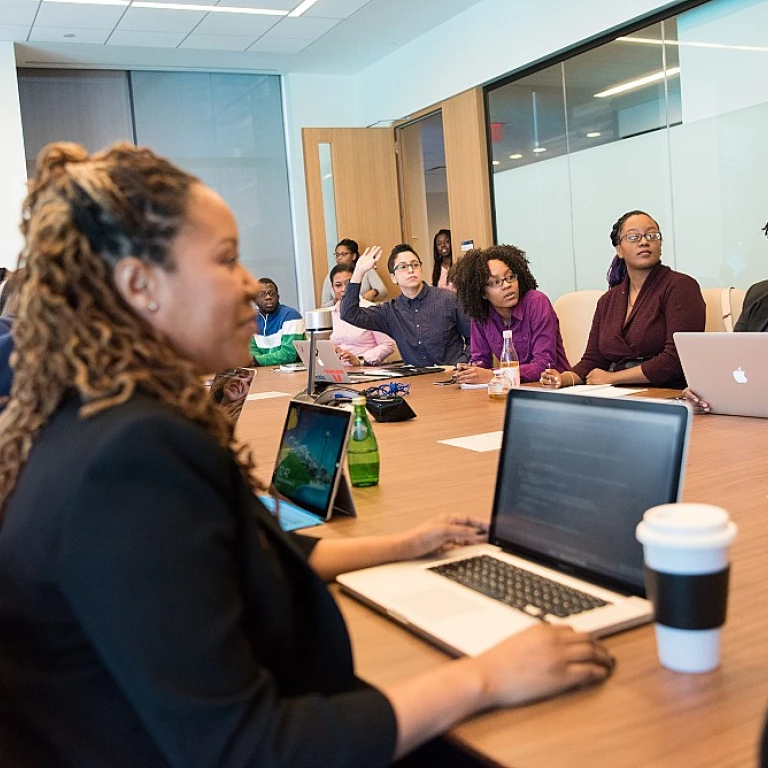Understanding the Importance of Employee Benefits Communication
The Value of Transparent Benefits Information
Successfully communicating benefits information to employees is more than just a good HR practice—it's essential for fostering a motivated and engaged workforce. When organizations provide clear and accessible information about the benefits they offer, employees can better understand and appreciate the full value of their compensation package.
One of the most compelling reasons to prioritize employee benefits communication is the impact it has on workplace satisfaction and retention. Employees who fully understand their benefits are more likely to feel valued and satisfied with their job, which can significantly reduce turnover rates.
Moreover, when employees are well-informed about their benefits, they are more likely to use them, which can lead to a healthier, more productive workforce. In a competitive job market, offering a robust benefits package and effectively communicating it can be a strong differentiator that helps attract and retain top talent.
If you're interested in enhancing your HR communication skills to better convey the significance of employee benefits and other HR initiatives, you might find this resource on
mastering communication skills for HR pros particularly useful.
Effective benefits communication is not simply about having the right policies in place—it's about ensuring those policies are fully understood and appreciated by every member of your team. As you continue with your strategy, remember to tailor the communication approach to fit your unique organizational needs, as discussed in the following sections. This will further cement the importance of benefits in the minds of your employees and drive engagement.
Building a Communication Strategy That Works
Crafting a Comprehensive Communication Blueprint
To effectively communicate employee benefits, it is crucial to establish a detailed and well-thought-out communication strategy. This strategy should serve as the backbone for all subsequent communication initiatives, ensuring that employees are well-informed and engaged with the benefits available to them.
A successful communication strategy begins with setting clear objectives. Define what you want to achieve – whether it’s increasing awareness about benefits programs, improving employee satisfaction, or reducing the number of queries regarding benefits. Having clear goals will guide your strategy and help measure its effectiveness later on.
Next, identify your target audience. While it might seem obvious that all employees are the audience for benefits communication, different groups within your organization might respond differently to various messages. Tailor your communication to address the specific needs and concerns of different demographic groups, such as newly hired employees, remote workers, or those nearing retirement.
Once you have a clear understanding of your audience, plan the key messages you want to convey. Develop messaging that is clear, concise, and aligned with your organization's values. Avoid jargon and ensure the information is easily understandable across different levels of the organization.
Choose the right timing for your communications. This involves scheduling regular check-ins, updates during enrollment periods, and reminders throughout the year. Timing is crucial for maintaining engagement and ensuring that the information is top-of-mind when decisions need to be made.
Utilizing tools and resources effectively is also a part of crafting your strategy. Make use of platforms and technologies that can help streamline your communication efforts and make the information easily accessible to all employees. For more insights on building an efficient HR communication plan, explore our piece on
creating an effective HR communication plan.
With a solid strategy in place, you can now shift your focus to selecting the most appropriate communication channels, which is key to ensuring that employees receive and engage with the benefits information.
Choosing the Right Communication Channels
Selecting the Best Avenues for Communication
In the digital age, there is a plethora of communication channels available for conveying employee benefits. Choosing the right ones is crucial to ensure your message reaches and resonates with every employee.
Firstly, it's essential to understand your audience. Consider the demographics of your workforce, such as age, technological proficiency, and preferred methods of communication. This understanding will guide you in selecting the most effective platforms, whether they be traditional print materials, emails, webinars, or social media.
Additionally, leveraging multiple channels can enhance the reach and impact of your message. For instance, combine an email campaign with an engaging webinar to cater to different learning styles. You can also utilize your company's intranet or a dedicated HR portal where employees can access benefit information anytime.
For more insights into optimizing your HR communication efforts, read about how
boosting HR communication for a better workplace can further enhance your strategy.
Lastly, ensure that the chosen channels allow for two-way communication, enabling employees to ask questions or express concerns about the information they receive. This interactive approach not only clarifies doubts but also reinforces engagement by making employees feel heard and valued. By carefully selecting your communication channels, you'll be able to effectively inform and engage your workforce about the benefits available to them.
Capturing Employee Attention and Interest
To effectively engage employees with benefits information, it's essential to capture their attention and pique their interest. Let's begin by considering how compelling visuals and clear messaging can play a vital role. Visual communication tools like infographics and videos can transform complex information into easily digestible content, making it more appealing and easier to understand.
Keep your communication language straightforward and approachable. Avoid HR jargon and focus on what's in it for the employee. This aligns with the communication strategy you should have outlined earlier, where clarity and relevance were identified as key.
Personalization: Making Benefits Relevant
Another strategy to engage employees is through personalization. Tailor the benefits information to meet individual needs and life stages. Use employee data to send customized emails or notifications that highlight benefits most relevant to them.
For instance, younger employees may be more interested in student loan support, while older employees might care more about retirement planning. By personalizing the communication, you enhance its relevance, making it more likely to resonate with employees and drive engagement.
Interactive Sessions and Engagement Activities
Engagement can also be boosted through interactive experiences. Host workshops, Q&A sessions, or webinars where employees can ask questions and receive immediate responses. Creating opportunities for live interaction helps demystify benefits packages and builds a more personal connection between employees and the HR department.
Additionally, gamification can be an effective way to increase engagement. Consider incorporating quizzes, challenges, or contests related to the benefits information. This can make learning about benefits more enjoyable and interactive, encouraging employees to participate actively.
Remember, the goal is not just to inform but to engage in a meaningful way that fosters an ongoing dialogue, paving the way for productive feedback and the opportunity to refine your communication approach. For more insights on crafting engaging HR communication strategies, keep these principles in mind as you build your benefits communication plan tailored to your organization's unique culture and employee needs.
Gathering and Utilizing Employee Feedback
Listening to Employee Voices
Effectively communicating employee benefits is not just about delivering information; it’s a two-way street that involves actively listening to your workforce. Gathering and utilizing employee feedback is a crucial step in ensuring that your benefits communication plan resonates with your team and meets their needs.
To start, consider implementing regular surveys or feedback sessions where employees can express their thoughts on the current benefits communication. This approach not only helps in identifying gaps but also empowers employees by giving them a platform to voice their opinions. It's essential to create a culture of openness where employees feel comfortable sharing their honest feedback without fear of repercussions.
Once feedback is collected, analyze the data to identify common themes or concerns. Are there particular benefits that employees find confusing? Is there a specific communication channel that is not reaching them effectively? Use this information to refine your communication strategy, ensuring that it aligns with the preferences and expectations of your workforce.
Remember, the goal is to foster an environment where employees feel heard and valued. By acting on their feedback, you demonstrate a commitment to improving their experience and making informed decisions that benefit the entire organization. This not only enhances the effectiveness of your benefits communication plan but also boosts overall employee engagement and satisfaction.
Incorporating employee feedback into your strategy is not a one-time task but an ongoing process. Regularly revisiting and updating your approach based on new insights will help maintain a dynamic and responsive communication plan that evolves with the changing needs of your employees.
Measuring the Success of Your Benefits Communication Plan
Evaluating the Impact of Your Benefits Communication
Effectively sharing information about employee benefits is not just about crafting compelling messages and selecting suitable channels; it's equally critical to assess the impact of these efforts. The final step in an effective benefits communication plan involves measuring its success.
First, define clear metrics that align with your organization's goals. These metrics might include increased employee awareness, higher enrolment in benefits programs, or improved employee satisfaction scores. By understanding what success looks like, you can more accurately gauge whether your communication strategies are hitting the mark.
Next, consider leveraging both qualitative and quantitative data. Surveys and feedback forms provide tangible metrics, while conversations and open dialogues during company meetings offer qualitative insights. This combination can paint a comprehensive picture of how your benefits communication is received.
Additionally, compare pre- and post-communication engagement levels to evaluate the effectiveness of the communication strategy you have in place. Has participation in benefits programs increased? Are employees asking more informed questions? These indicators can reveal much about the impact of your efforts.
Communication isn't a one-time event but an ongoing process. Based on the data collected, continually refining your strategy ensures that the information remains relevant and beneficial for employees. As discussed in our sections on building an effective communication strategy and engaging employees, a well-rounded approach considers the evolving needs of your workforce.
Finally, don't underestimate the power of direct feedback from employees. Creating a feedback loop not only helps measure success but also illuminates areas for improvement. For more insight on harnessing feedback, explore our article on
how employee feedback shapes HR communication. This continuous adjustment helps foster an environment where employees feel informed and valued, ultimately leading to a more engaged and satisfied workforce.








